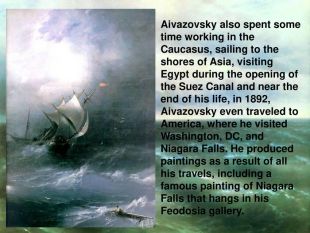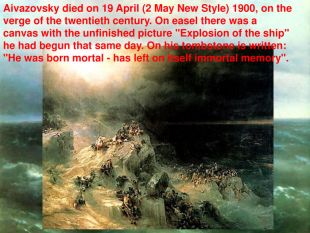К.І. Айвазовський по темі "Мистецтво" 10 клас
Про матеріал
Презентація про життєвий шлях великого моряниста К.І. Айвазовського стане в нагоді вчителям в 10 класі по темі "Мистецтво". Її можна використати й як матеріал для аудіювання.
Зміст архіву
- .ppt ppt
Перегляд файлу
Зміст слайдів
zip
Оцінка розробки


Безкоштовний сертифікат
про публікацію авторської розробки
про публікацію авторської розробки
Щоб отримати, додайте розробку
Додати розробку




























